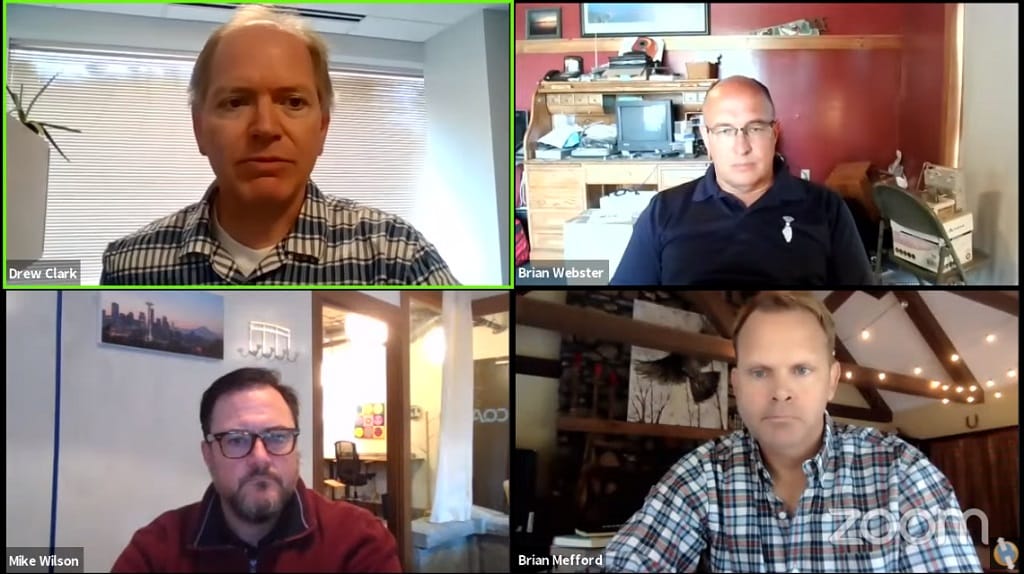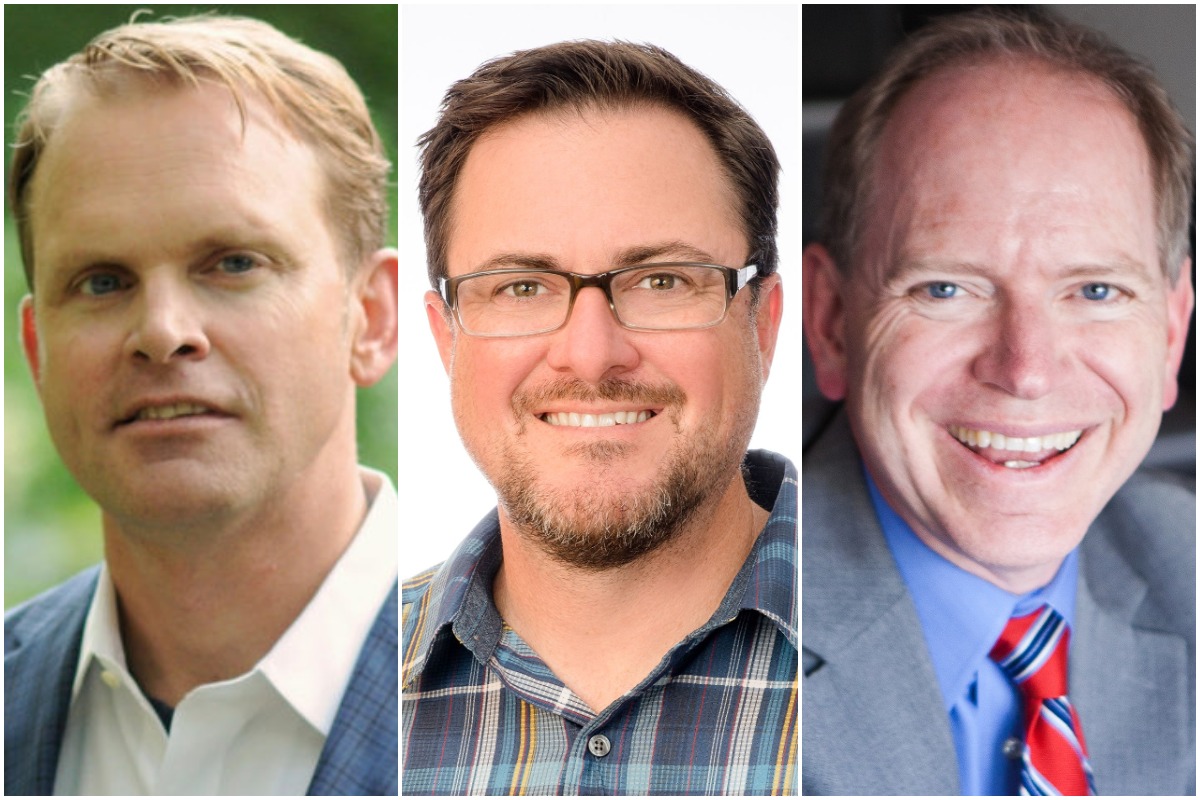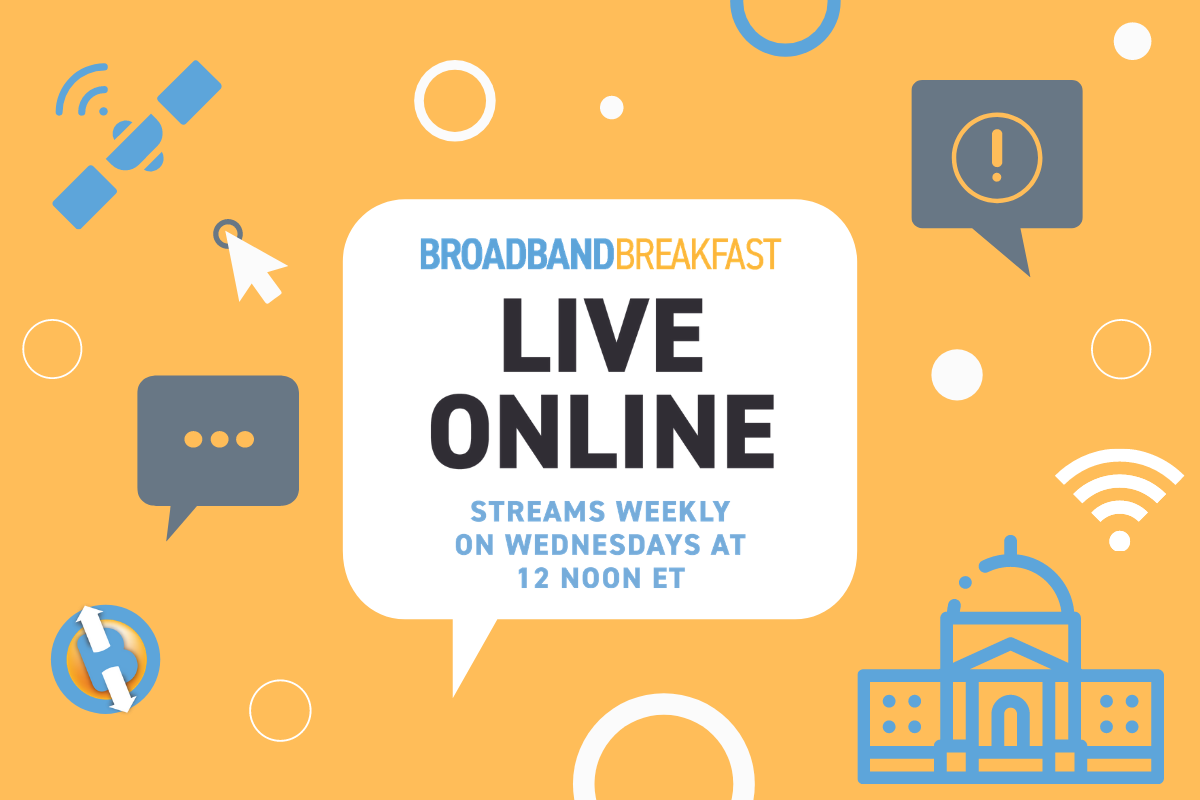Broadband Breakfast Panelists Pitch Solutions for Finer Broadband Mapping Data
Experts argue for significant changes in order for broadband mapping efforts to be successful.
Benjamin Kahn

July 13, 2021—A federal mandate to get granular broadband data down to the doorstep would greatly speed up deployment, according to panelists on the latest Broadband Breakfast event last week.
Brian Webster, CEO of Wireless Mapping Inc., said on the panel the current Form 477 – which collects data on a broader census tract level to see which providers serve which areas – is not a great metric for measuring broadband coverage, and argued for better, higher-quality, and specific data.
That could be in the form of a federal mandate that would make 9-1-1 data public domain, he said on the July 7 event. This would allow other entities to determine specific buildings to better understand the layout of an area.
Webster pointed to New York as a state that had already done this and said that states that lock this data behind a paywall will continue to fall behind in their broadband deployment efforts. He said one of the great challenges is determining what kinds of buildings occupy a certain area; even if data accounts for a building, it may not distinguish a barn or a shed from an apartment or office building.
He also pointed to the U.S. national grid as an alternative to Form 477, where internet service providers would fill in their coverage areas down to the square meter across a blank grid representing the geography of the U.S., as opposed to simply using census blocks. He said that either of these approaches—or a combination of the two—would be an improvement on the current mapping models used by the FCC.
“[Form 477] gets to be problematic to use as a metric,” he said. “The problem is that it is one of those standardized things that everyone gravitates to.” Webster lauded the use of building data, such as those used in Costquests collection model, as it paints a more reliable picture the landscape that networks need to cover.
Problems with Form 477
The problems with Form 477, which relies on ISP data, have been documented going back years. Earlier this year, the FCC announced it has been working on improving its mapping by collating more granular data and unifying it, with participation from the industry, to help find missing connectivity spots.
The agency has been under fire since allegations emerged that it had used erroneous data from ISPs to provide snapshots of connectivity in rural America. The data, the 2019 allegation goes, was used by chairman Ajit Pai to ostensibly show that millions more Americans were connected to the federal speed standard of 25 Megabits per second download and 3 Mbps upload from 2016 to 2017. That was then corrected in a subsequent press release.
In March, a bipartisan-signed letter addressed to Acting FCC Chairwoman Jessica Rosenworcel called on the FCC to improve and update the existing maps.
Better data methods?
Mike Wilson, vice president of business development for data company CostQuest, argued why the existing data can be lacking and why his firm’s own data is more accurate.
On Wednesday’s live event, Wilson argued that CostQuest’s “Broadband Serviceable Location Fabric” has shown that some areas once believed to be served, according to the FCC 477 census data, are only partially served at best.

According to CostQuest’s data, when using the company’s algorithm, the number of unserved locations increased by almost five million when compared to FCC data.
“Think about how that [bad broadband data] impacts policy making, funding, and build-outs by state,” Wilson said. “What that means economically is that it is going to cost a lot more to serve these locations that are unserved.”
The impact of a vacillating definition of broadband
Brian Mefford, vice president of broadband strategy for Vetro Fiber, pointed to a potential pitfall, in that as efforts to shift the definition of broadband continue to grow, some areas that are currently considered served may drop off the map.
Currently, any network capable of 25 Mbps download and 3 Mbps upload is considered broadband. Some advocates and legislators believe that this definition is not aligned with how Americans currently use the internet and want broadband to be considered any network that is capable of 100 Mbps symmetrical service.
“This creates the need for states to play multi-leveled chess,” Mefford said. He explained that a situation like this could lead to a scramble to figure out who is served, who is now considered unserved, who is deserving of grant money, and how to attract new providers to supply broadband in the state.
Our Broadband Breakfast Live Online events take place every Wednesday at 12 Noon ET. You can watch the July 7, 2021, event on this page. You can also PARTICIPATE in the current Broadband Breakfast Live Online event. REGISTER HERE.

Wednesday, July 7, 2021, 12 Noon ET — “Broadband Mapping is Back!”
Before the conversation of broadband deployment can even begin, accurate broadband maps must exist. Without sufficient mapping data, broadband providers may invest in areas that already have ample coverage, or worse yet, they may overlook areas desperately in need of coverage. Join Broadband Breakfast for a deep dive into the work that goes on behind the scenes to ensure that broadband build-outs are cost effective, future-proof, and able to meet the demands of the people they serve.
Panelists:
- Brian Mefford, Vice President of Broadband Strategy, Vetro Fiber
- Mike Wilson, Vice President of Business Development, Costquest
- Brian Webster, CEO, Wireless Mapping Inc.
- Drew Clark (moderator), Editor and Publisher of Broadband Breakfast

Brian Mefford joined VETRO with a wealth of experience helping to shape federal and state broadband programs and leading community broadband efforts in rural areas. Prior to VETRO, Brian founded Connected Nation, a nonprofit focused on enriching community broadband access. During his time at Connected Nation, Brian led the spin out of CNX, a platform for establishing public/private broadband network deployment partnerships that provided the nexus at which Brian first met and worked with the founders of VETRO to develop a 5G asset management solution. Brian has worked with government leaders at all levels to advance innovation, providing testimony regularly for state legislatures and the U.S. Congress and consulting with federal agencies including the FCC, NTIA, USDA and the State Department.
Mike Wilson, vice president of business development for Costquest, focuses his consulting efforts in the areas of rural telecommunications policy, universal service funding, interconnection, and operational analysis for wireless, competitive, and incumbent local carriers. Prior to joining CostQuest, he worked at Western Wireless/Alltel. He managed Wireless Interconnection, focusing on carrier negotiations and reducing Cost of Service for Alltel’s wireless business unit. Prior to Alltel’s merger with Western Wireless, his work was related to Universal Service Funding.
Brian Webster has been in the commercial wireless and broadband industry as an RF engineer and GIS/Mapping analyst for 31 years. For the past 19 years he has been a consultant where he worked on the National Broadband Map in the states of Illinois and New York. His broadband data analytics and mapping skills have been utilized by both governmental agencies and grant applications alike.
Drew Clark, editor and publisher of Broadband Breakfast, also serves as Of Counsel to The CommLaw Group. He has helped fiber-based and fixed wireless providers negotiate telecom leases and fiber IRUs, litigate to operate in the public right of way, and argue regulatory classifications before federal and state authorities. In addition to representing public and private providers on broadband issues, Drew is actively involved in issues surrounding interconnected Voice-over-Internet-Protocol service, spectrum licenses, robocalling including STIR/SHAKEN, and the provision of video franchises and “over-the-top” copyrighted content.
Panelist Resources:
- BroadbandUSA Data and Mapping
- NTIA Broadband Map, Senators’ Cybersecurity Bill, U.S. and EU Reveal Transatlantic Council
- Drew Clark: Broadband Maps Are a Mess, So Now Let’s Focus on Actually Improving Them
- Broadband-Mapping.com
WATCH HERE, or on YouTube, Twitter and Facebook.

As with all Broadband Breakfast Live Online events, the FREE webcasts will take place at 12 Noon ET on Wednesday.
SUBSCRIBE to the Broadband Breakfast YouTube channel. That way, you will be notified when events go live. Watch on YouTube, Twitter and Facebook.
See a complete list of upcoming and past Broadband Breakfast Live Online events.











Member discussion